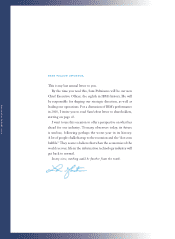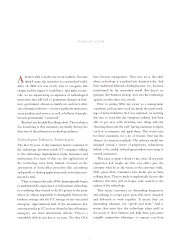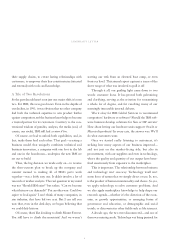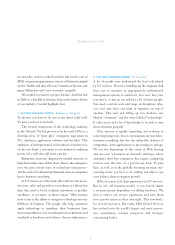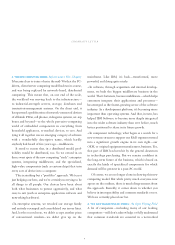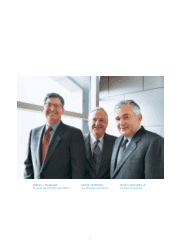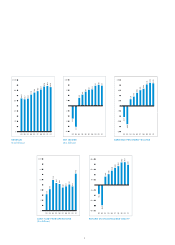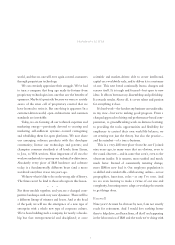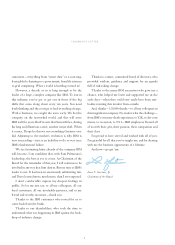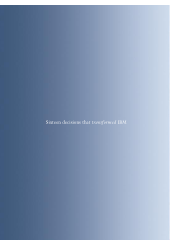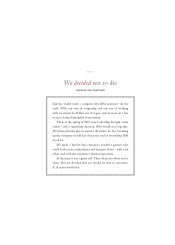IBM 2001 Annual Report Download - page 6
Download and view the complete annual report
Please find page 6 of the 2001 IBM annual report below. You can navigate through the pages in the report by either clicking on the pages listed below, or by using the keyword search tool below to find specific information within the annual report.
4
3.THE NEW COMPUTING MODEL: Infrastructure Plus Ubiquity
It became clear to some of us in the mid-’90s that the PC-
driven, client/server computing model had run its course,
and was being replaced by network-based, distributed
computing. This meant that, on one end of the scale,
the workload was moving back to the infrastructure
—
to industrial-strength servers, storage, databases and
transaction-management systems. On the client end, it
has spawned a proliferation of network-connected devices
of all kinds: PDAs, cell phones, videogame systems, set-top
boxes and beyond
—
to the whole pervasive-computing
world of embedded components in everything from
household appliances, to medical devices, to cars. And
tying it all together was an emerging category of software
with a wonderfully descriptive name, which hardly
anybody had heard of five years ago
—
middleware.
It stood to reason that, in a distributed model, prof-
itability would be distributed, too. So we zeroed in on
three sweet spots of the new computing “stack”: enterprise
systems, integrating middleware, and the specialized,
high-value components (such as custom chips) that turn
every sort of device into a computer.
This is anything but a “portfolio” approach. We’re not
just hedging our bets, and we’re certainly not trying to be
all things to all people. Our choices have been about
both what businesses to pursue aggressively, and what
ones to exit (such as enterprise application software and
networking hardware).
•In enterprise systems, we retooled our storage family
and entirely revamped and consolidated our server lines.
And, let the record note, we didn’t accept another piece
of conventional wisdom
—
we didn’t give up on the
mainframe. Like IBM, it’s back
—
transformed, more
powerful, and doing quite nicely.
•In software, through acquisition and internal develop-
ment, we built the biggest middleware business in the
world. That’s fortunate, because middleware
—
which helps
customers integrate their applications and processes
—
has emerged as the fastest-growing sector of the software
industry. As a development platform, it’s becoming more
important than operating systems. And that, in turn, has
helped IBM Software to become more deeply integrated
into the wider software industry than ever before, much
better positioned to share in its future growth.
•In component technology, what began as a search for a
new revenue stream to support our R&D expenses turned
into a significant growth engine in its own right
—
our
OEM, or original equipment manufacturer, business. Yes,
that part of IBM has been hit by the general downturn
in technology purchasing. But we remain confident in
the long-term future of the business, which is based on
exactly the kinds of specialized components for which
demand will be greatest in a post-PC world.
Of course, we are no longer alone in drawing this new
computing model. But while pretty much everyone now
agrees on the outlines, there is much disagreement about
the approach. Basically, it comes down to whether you
believe in interoperability and common standards or not.
We have certainly placed our bet.
4.THE NEW MARKETPLACE MODEL:An Open Playing Field
A lot of companies
—
including many of our leading
competitors
—
still don’t acknowledge or fully understand
that common standards are essential in a networked
chairman’s letter

